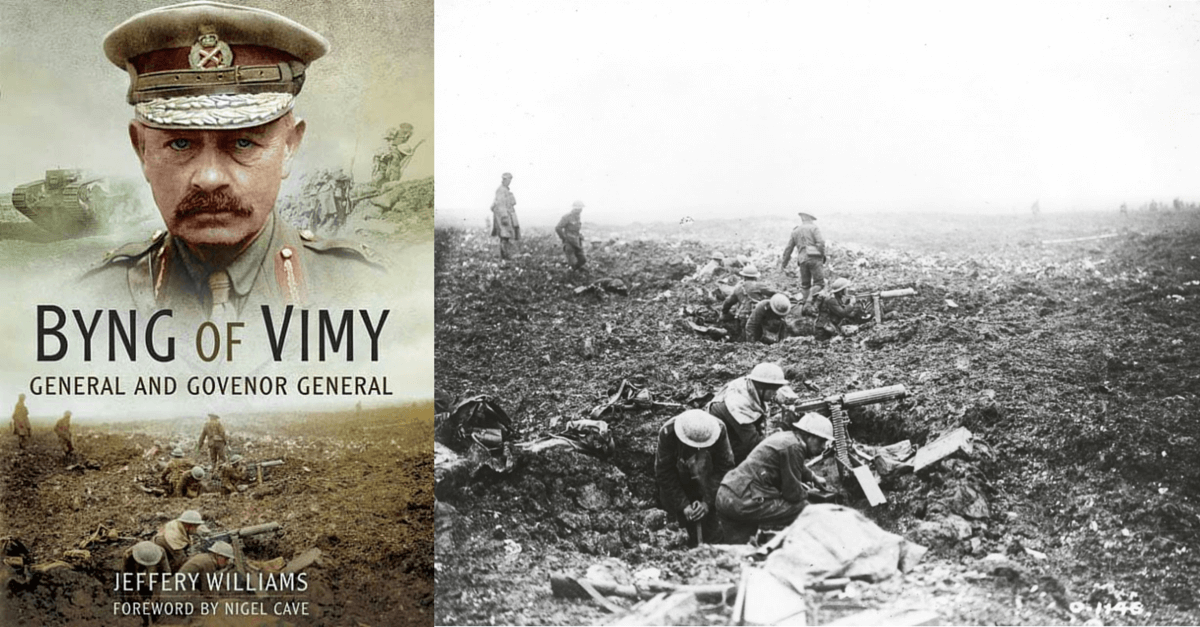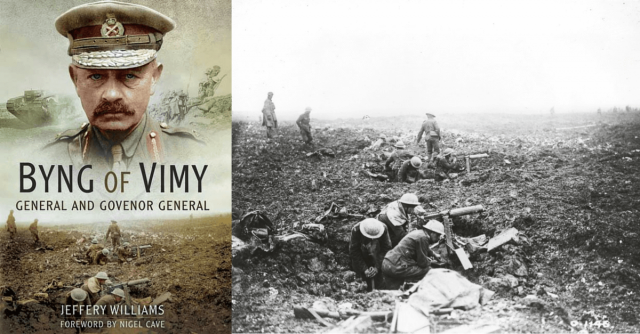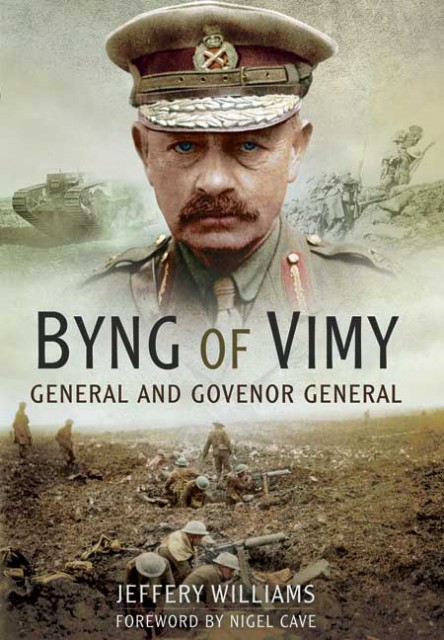This is a biography of the Great War general famous for commanding the Canadian Corps, the victor at Vimy Ridge, being commander of the Third Army up to the end of the Great War, the Battle of Cambrai and for being the Governor General of Canada. It is a well-researchedbiography written in an easy style which is a pleasure to read. The end notes contain copious references, the bibliography demonstrates the range of the research that has gone into the book and the index is comprehensive. I have to admit that before reading this biography I knew very little about Byng, beyond his Great War record.
‘Bungo’ Byng enjoyed army life right from his unremarkable school days and joined the 2nd Middlesex Militia in 1879. He was gazetted as a lieutenantin the 10thRoyal Hussars, the Prince of Wales’ own unit and the most expensive Regiment in the British Army, on 27 January 1883.He saw active service in the Sudan and the Boer War and when war broke out in 1914 he already had many years’ service and was a major-general. Byng was a regular, career soldier who turned out to be an outstanding general.
He was married to Marie Evelyn Moreton.They had no children, although they wanted them, because Evelyn had a series of miscarriages while they were in India. There had been a suggestion in the press that Kitchener was engaged to Evelyn but that was apparently not true. A bad fall from a horse in India almost destroyed Byng’s career but sheer grit and determination saw him recover and return to active army life. When the Great War began he was given command of the 3rd Cavalry Division and was soon in action on the Western Front. In April 1915 he was temporarily promoted to the command of the Cavalry Corps but events further afield were to take him away from the Western Front for a while.There was a desperate need for good generals at Gallipoli and he was sent out there to take over IX Corps.
That Corps had been badly led and had suffered serious losses and defeat on 21/22 August 1915 and it was in a bad way. Byng arrived at Suvla Bay on 24 August 1915 to take over and immediately decided that withdrawal was the only course of action left to IX Corps. Gallipoli caused his old friend Lord Kitchener to permanently fall out with him. Byng was one of the unsung architects of the evacuation but Kitchener was angry with him for even suggesting it. Byng said that if he were allowed to conduct the evacuation his way then casualties would be minimised. He knew that if the evacuation from Suvla Bay failed and became a blood bath, as Hamilton had predicted, his career would be over. It succeeded in spectacular fashion in December 1915 andKitchener never forgave him for it. Nonetheless, Gallipoli was not as toxic for Byng as it was for some other generals. How much Kitchener’s death helped Byng’s career to progress is a theory to speculate about and not covered in the book. In February 1916 Byng was back in Britain on his way to take command of XVII Corps.
Byng’s letters to the sister of Sir Basil Brooke, one of his ADCs, are warm, humorous and show the human side of his nature and one gets the impression that he is writing to the daughter that he wanted and never had. Indeed he tended to treat his ADCs, Basil Brooke and ‘Chopper’ Titchfield, like sons.“I started writing this letter, my dear Sylvia, some days ago and meant to finish it, but there is a beastly war on here and I had to bolt off to watch people trying to kill each other, and now I have nothing to say.” He doesn’t sound like the murdering tyrant or ‘donkey’ that certain historians or indeed certain nations like to portray British generals as.
He was determined, when he could,to live under the same conditions as his troops. When his ADCs put glass windows in his dug out at Suvla Bay he smashed them all on the grounds that if his men could not have glass windows in their dug outs nor would he. Byng had a habit of touring the trenches after dark when things were ‘lively’ and he made certain that throughout the war he only took the same amount of leave as his Other Ranks. As a major-general Byng also played football, something that generals rarely did, and turned out for the 3rd Cavalry Division’s side.
In May 1916 he was posted to command the Canadian Corps. He was not very pleased with this move because he had been happy commanding XVII Corps. Nonetheless, with characteristic energy he threw himself into the task at hand. Very soon he managed to get himself involved in controversy because he disliked the Canadian authorities’habit of appointing inexperienced, or incompetent officers to the Corps on political grounds. He wanted to appoint his own, experienced veterans; he did not want men who had bought their ranks or who were there because of who they knew.He also felt that Canadian organisation was poor and set about changing things. He got his way and was soon warmly liked by the Canadians for what he did with and for the Corps. The Canadian fighting spirit, quality and high morale impressed him greatly but he found that their competitiveness and pride in their own units sometimes caused friction and impaired co-operation within the Corps itself. He successfully turned things around and along with his staff made the Canadian Corps an elite force in the BEF and for whom Vimy Ridge, 1917, will be forever famous.
In June 1917 he was made the General of the British Third Army. It was his idea to incorporate the tanks into the superb combined arms operation at Cambrai that pointed the way to the All Arms operations of the victorious 100 Days Campaign in 1918. Byng loathed pageant and was furious with his wife for attending the occasion when the King of Belgium entered Brussels after the end of the war. On the other hand, characteristically, he handled the strikers at Calais with sympathy and sensitivity.
Williams claims that Byng was the man behind the British Legion. There are a few who claim that honour and The Official History Of The British Legion(Macdonald & Evans, 1956) does not directly credit that, only mentioning the general briefly, allowing that he was diplomatic and the chair of the meeting in 1919when the organisation was founded. He did go on to be the first chairman of the British Legion and was the administrator of the money raised for ex-servicemen that became known as ‘Byng’s Millions’. Inevitably, he spent a great deal of time unveiling war memorials.
He was Governor General of Canada from 1921 to 1926 and he became involved in the contretemps with Canadian Prime Minister Mackenzie King which became known as the ‘King-Byng Affair’. This unsatisfactory situation managed to reinforce the view that Byng already had of politicians, born of his wartime experience, ultimately he did not trust them.While in Canada it was discovered that he had a heart condition.
When he left his post in Canada,his country would not let him retire. In 1928 he grudgingly accepted the post of Chief Commissioner of the Metropolitan Police Force. His personal style endeared him to the force and he was responsible for introducing a range of reforms including the use of unmarked police cars and the improvement of police communications. It is also claimed that Byng managed to root out the corruptionthat existed in the Met.He finally retired in 1930 but was still troubled by his heart condition. He was made a Field Marshal in 1932 and he died in 1935.
The late Jeffrey Williams’ book is in its third reprint and I have thoroughly enjoyed reading and reviewing it. For anyone interested in the Western Front, Great War generals, B.E.F history, Canadian history or biographies about famous folk it is worth seeking out. If I have one criticism it is that Williamswas obviously so very fond of his subject. So fondin fact that it is difficult to imagine Byng putting a foot wrong anywhere!Did Williams put a shine on Byng and his life? Yes, I think so, but do we get a sense of truth in these pages? Yes, we do. There is certainly an element of ‘Superman’ about Williams’ tale of Byng’s life, but I don’t think that matters. He was an effective general and a remarkable man. He was a hero at the time when heroes were needed and soldiers were the superstars. A product of the pre-Great War British Army, Julian Byng was not a donkey.Quite the opposite in fact. Believe it or not, I’ve left a good deal out! If you want to know more, dear reader, go and find the book and see what you think about ‘Bungo’ Byng.
Reviewed by Dr Wayne Osborne for War History Online
BYNG OF VIMY
General and Governor General.
By Jeffrey Williams.
Published 1983. Reprinted by Leo Cooper, 1992. Reprinted by Pen & Sword Ltd, 2014.
Paperback, 399 pages.
ISBN 978 1 47382 382 2


